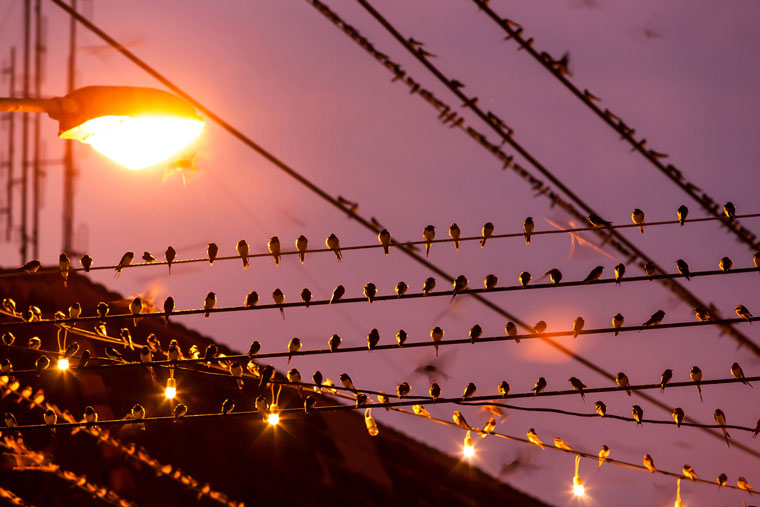MEDFORD, Mass. – The unintended impact of nighttime lighting on the nocturnal environment of myriad ecosystems and wildlife species is the topic of a free March 3 webinar hosted by the DesignLights Consortium (DLC). The webinar is timed with the annual spring migration of bird species across North America, a phenomenon that often occurs during the night. Speakers representing the National Park Service and BirdCast, a consortium run out of the Cornell Lab of Ornithology, will share their expertise, experience and mitigation strategies.
“Done properly, artificial lighting at night benefits human communities in many ways, from illuminating work sites to enabling nighttime recreation and gatherings. The complications come when light at night is used in excess, resulting in disruptions to wildlife and ecosystems that can have lasting implications on animal populations and, ultimately, biodiversity in general,” DLC Executive Director and CEO Christina Halfpenny said. “This webinar will introduce participants to the environmental impacts of light at night and provide a look at some initiatives that are tackling this challenge.”
“Responsible Lighting at Night: The Impacts of Light on Wildlife & Ecosystems” will cover the current state of scientific knowledge and standards that enable design solutions that minimize harm to wildlife and the environment. Highlights will include discussion of the National Park Service’s (NPS) Natural Sounds and Night Skies activities and initiatives for protecting the environment from the negative impacts of light at night, and programs such as Lights Out! and BirdCast, which are working to safeguard migrating birds from building collisions associated with overlighting.
Moderated by DLC Director of Market Strategy & Development Dorene Maniccia, the webinar includes three panelists:
- Julia Wang, BirdCast Project Leader, who is developing and coordinating Lights Out! campaigns with conservation partners and local stakeholders to facilitate widespread public and government adoption of conservation practices. These campaigns integrate BirdCast research to better identify nights on which migratory birds are most at risk from the harmful effects of artificial light, and to quantify the effect of intervention.
- Jeremy White, NPS Night Skies Program Physical Science Technician, whose work involves measuring light pollution levels and researching the effects of light pollution within US national parks. The NPS Natural Sounds and Night Skies Program identifies source-specific impacts and engineered solutions to reduce, mitigate, or prevent anthropogenic noise and excessive light in and around parks and national trails.
- Leora Radetsky, DLC Senior Lighting Scientist and one of the main authors of the DLC LUNA technical requirements, will discuss how non-white light is specified by various regulatory and voluntary organizations, and the challenges that are posed to these stakeholders and their end-users by the lack of standardization and consistency around non-white light sources. Non-white light, and specifically yellow-orange or amber light sources, are often posed as a solution for environmentally sensitive areas and for astronomical sky glow.
The second in a series of DLC webinars focusing on responsible light at night, next week’s event follows the DLC’s release of the LUNA technical requirements, which specify performance criteria for energy efficient commercial and industrial lighting products that also have light pollution mitigating features. The new technical requirements support the five principles for good outdoor lighting recommended by the International Dark Sky Association and the Illuminating Engineering Society.
“Responsible Lighting at Night: The Impacts of Light on Wildlife & Ecosystems” takes place from 3 – 4 p.m. (EST) on Thursday, March 3. Register here.
Tagged with DLC, light pollution, lightED